Article: Should we wear a flight helmet when flying in a helicopter? Revisiting a cultural blindspot
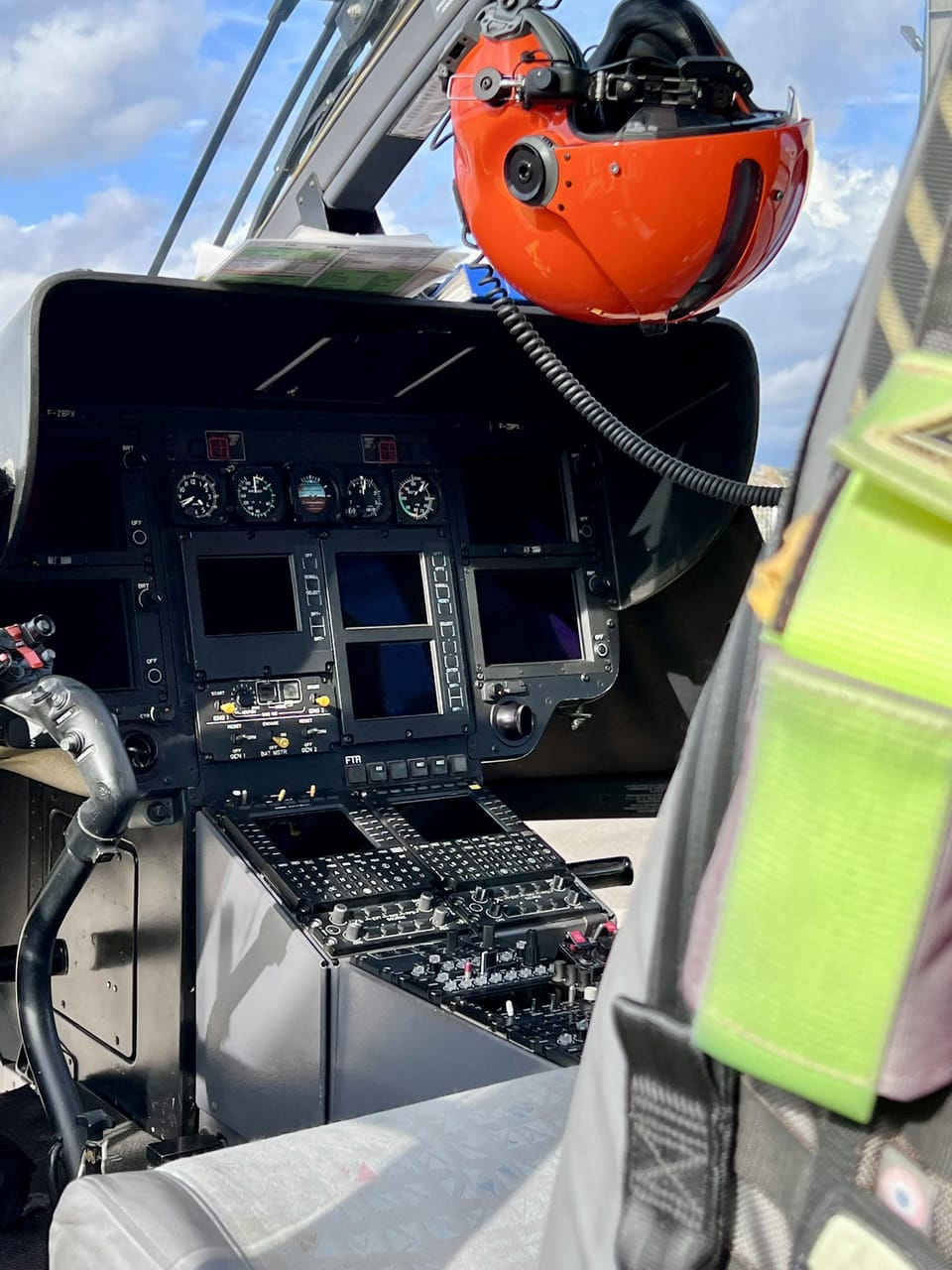
Despite strong evidence that flight helmets significantly reduce the risk and severity of head injuries in helicopter accidents, their use remains uncommon outside of military and utility operations. This article draws on accident investigation reports, industry recommendations, and scientific literature to examine both the proven benefits and the practical drawbacks of helmet use.
Should there be a cultural shift toward universal helmet use in helicopter flight – or are pilots, in some cases, actually safer without one?
I’ve flown helicopters in the UK since 2002, as a student, private pilot, flight instructor and commercial pilot carrying passengers. I’ve never worn a flight helmet nor seen any other pilot in these roles wearing one. Until I had a student who had flown fixed-wing in the Navy I hadn’t even seen a flight helmet up close. It’s simply not part of the flying culture in these areas of light helicopter operations.
The question has been asked before and I’ll ask it again, should we in this pilot community adopt the flight helmet as an essential part of our everyday equipment? And let’s take it a step further. Should a passenger or student pilot expect to be offered head protection for the flight? Doing so would seem to make a lot of sense. Is there a good reason we don’t?
If we combine R22 and R44 accident investigation reports around 1 in 60 discuss head injuries.
In these the handling pilot or accompanying instructor either are not wearing a helmet and receive a head injury, or are wearing a helmet that was damaged and considered to have prevented or reduced the severity of head injury...
The pilot was not wearing a helmet
Case 1. The pilot was on a cross country flight in an R22 when the drive belts failed. During the forced landing the pilot sustained a serious head injury.
Case 2. A flight instructor and student pilot were conducting circuit (traffic pattern) and autorotation training in an R22. The left hand door, next to the instructor, was not installed. During the flight the helicopter collided with the terrain at the side of the runway. The instructor sustained a serious head injury probably through being struck by a main rotor blade whilst he was partially outside the cabin during the accident sequence. The investigation found that the use of a safety helmet would reduce the risk of serious injury during doors-off operation.
Case 3. After landing the R44 the student pilot tried to retrieve his jacket which was on the left seat and had shifted in flight. In doing so it is likely that he inadvertently raised the left collective leading to an accident sequence ending with the helicopter on its right side. The pilot received a head injury.
A helmet was worn but unsecured
Case 4. During a mustering flight the main rotor of the R22 stopped after collision with a tree. The helicopter fell to the ground coming to rest on its right side. The pilot was fatally injured during the crash. The report notes that “the crash was probably survivable had the pilot’s helmet remained on his head during the impact sequence.” The helmet was found with the chin strap unfastened.
A helmet was worn, so preventing or reducing the severity of head injury
Case 5. The pilot was conducting aerial work in an R22. Whilst manoeuvring the helicopter it underwent loss of tail rotor effectiveness (LTE) and possibly a low-G condition leading to a descent and collision with the ground. The pilot’s helmet struck and broke the cyclic during the accident sequence. The pilot commented that “wearing the helmet probably prevented a more serious injury from occurring.”
Case 6. The pilot was conducting aerial work in an R44. Whilst manoeuvring the helicopter it underwent LTE and and a low RRPM condition. The helicopter descended into trees. The pilot’s helmet “sustained impact and scratch damage that probably prevented the pilot sustaining more serious injuries.”
Case 7. The pilot was using the R22 in a mustering operation. With the R22 at about 10ft AGL a gust of wind blew through the left door opening causing a jerry can on the left seat to jam the cyclic control by wedging between it and the seat. As a result the front of the skids hit the ground starting a crash sequence that ended in the helicopter coming to rest inverted. The impact dislodged the top of the dashboard and this struck the pilot’s helmet. He was uninjured although the helicopter sustained substantial damage.
Case 8. A pilot was mustering cattle in an R22. On approach to the cattle yards the helicopter descended rapidly, collided with a tree and terrain and landed on its side. The pilot sustained serious head injuries and was unable to recall the sequence of events. The investigators were unable to determine the cause of the accident. The operator commented that “although the pilot sustained head injuries, the outcome might have been worse if the pilot had not been wearing a helmet.”
Safety Lessons:
Head injuries can occur during accidents involving the R22 and R44 (Cases 1-4).
Accidents causing head injuries happen during varied operations and stages of flight (Cases 1-3).
Given the rarity of helmet use outside of utility and EMS flights we’d be excused for feeling that we were somehow not at risk of a head injury when involved in other types of flying. But of course we are. Training in the circuit/autorotation (Case 2), training whilst stationary on the ground (Case 3) and mechanical failure during cruise flight (Case 1) all gave rise to accidents causing head injuries.
Wearing a helmet can prevent or reduce the severity of head injury during an accident (Cases 5-8).
We strongly suspected this. Now we know it.
When wearing a helmet ensure the chin strap is securely fastened (Case 4).
Wear a helmet when flying with one or more doors removed (Case 2)
It follows that without the restraint and protection afforded by the door, the person occupying the adjacent seat is at greater risk of head injury.
As an aside … Robinson recommend never flying with left door removed. This is to prevent loose objects flying out of the cabin and striking the tail rotor (1).
So tell us something we didn’t already think we knew.
These safety lessons are unlikely to come as a surprise to anyone. But they are a reminder that it's a very good idea to wear a flight helmet when flying in the R22 and R44. It protects against what can be extremely serious injury. This, of course, holds true for other models and makes of helicopters.
In the descriptively titled ‘Flight helmets: How they work and why you should wear one’, John Crowley reviews studies analysing helmet effectiveness. He concludes that anyone “regularly participating in helicopter flight (civilian or military) should be equipped with protective headgear” (2). And this includes those riding in the rear of the helicopter. With wearing a helmet comes the opportunity to use a helmet visor. An analysis of military helicopter operations attributed visor use to preventing facial injury in 22.2 per cent of crashes (3).
A study done after these reinforces their message: it’s wise to wear protective headgear. The study analysed injuries among pilots killed in fatal civil helicopter accidents (4). Fractures of the skull and facial bones occurred in 51.2% and 47.6% of cases, respectively. Injuries to the brain were found in 61.9% of cases and lacerations to the face had occurred 31% of the time.
In Reference 3, the majority of head/face injuries amongst crew not wearing a helmet were found to be caused by collision with instrument panels, control columns and windshields. This was in military helicopters. But in civil helicopters we generally face an additional risk of receiving a head/face injury: from the windshield shattering, most probably as a result of bird strike. This is because, unlike those of military helicopters, the windshields of most civil helicopters are not designed to withstand bird strikes (5). Robinson have offered optional impact-resistant windshields – constructed of energy-absorbing polycarbonate – since 2020 (6). These resist a 1kg test bird strike at impact speeds of up to 90 knots (R22) and up to 100 knots (R44, R66).

But most Robinson helicopters currently in operation have a standard acrylic windshield that is less resistant to impact. This means that in flight a bird is more likely to break the windshield (7) and enter the cockpit (8). If this happens, wearing a helmet with the visor down can prevent injury and possible incapacitation and loss of control. Other ways of mitigating the risk of a bird strike during helicopter operations are reviewed in Reference 5.
And bird-strike is not the only cause of a windshield shattering. A Cabri G2 was on an instructional flight with a suction cup mount for a camera installed on the inner centre of the plexiglass windscreen (9). As the aircraft passed 110 KIAS (near Vne) the windscreen shattered. The safety investigation concluded that the suction cup caused additional stresses on the single piece windscreen and weakened it. The instructor was able to reduce speed and land the G2 safely. When thinking about protective headgear, what’s notable about this incident is that numerous pieces of debris were found in the cockpit, and the headsets and goggles of the two crew members were torn off. Think about that for a moment… Fortunately - incredibly? - the facial injuries of the pilots were only superficial and the instructor's vision was not impaired.
Following this incident Airbus Helicopters issued a Safety Promotion Notice strongly encouraging pilots and all crew members to wear flight helmets with the visor down (10). One theme raised in this Notice was that, at least for the pilot, wearing protective headgear is not just about personal protection. As pilot in command we have a responsibility to do everything we can to look after our passengers/crew members. And this means we first have to look after ourselves. Wear a helmet/visor and we minimise our chances of being incapacitated, either in a crash or if the windscreen shatters and a few of pounds of unfortunate bird hits us in the head. We then maximise our chances of carrying out our duties: maintaining control of the helicopter in flight, and making the helicopter safe and aiding passengers after a crash. With this in mind it's reasonable to argue that it’s irresponsible for a pilot in command not to wear a helmet/visor, regardless of whether anyone else in the helicopter has one.
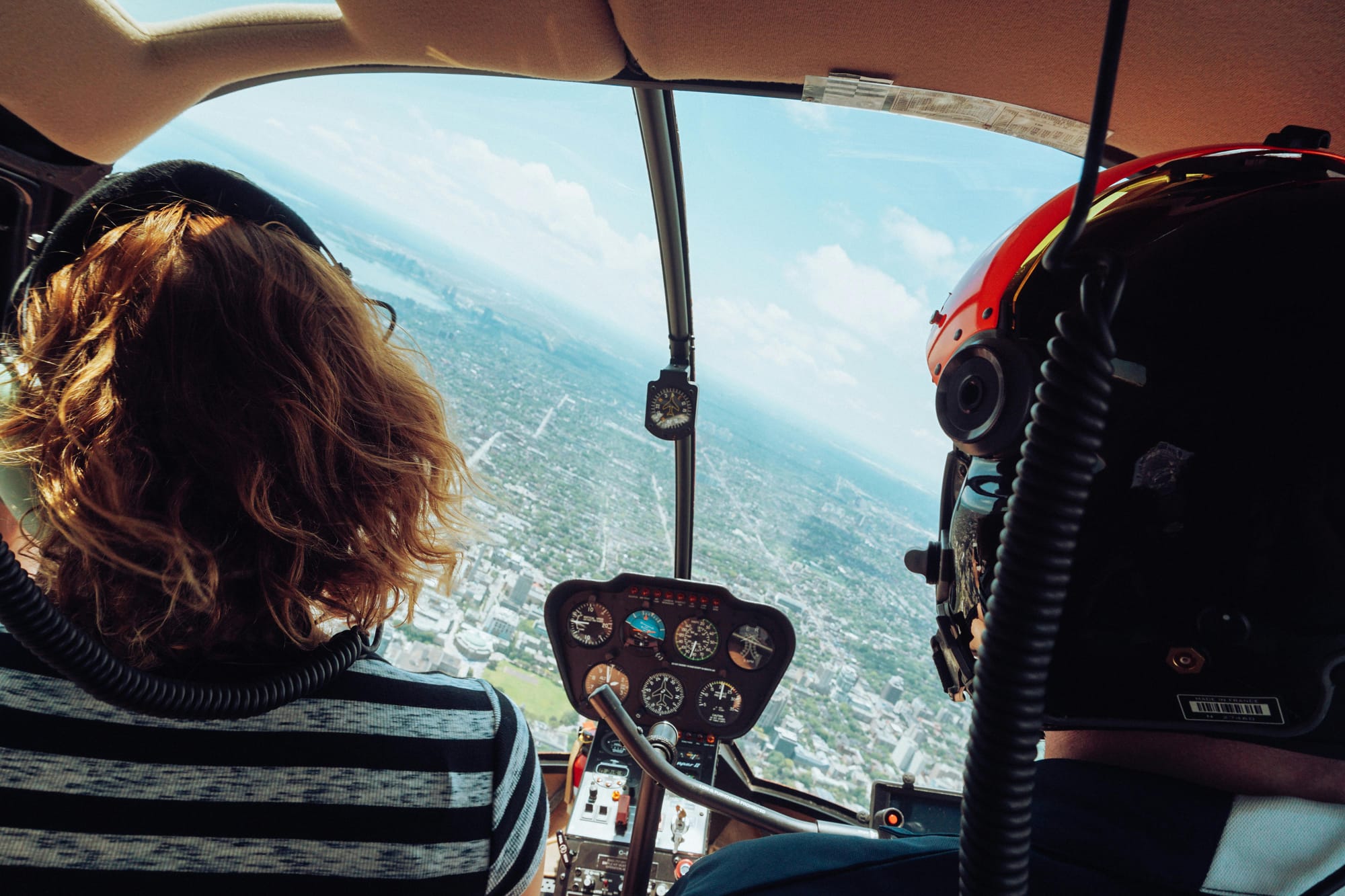
Is there a downside to wearing a flight helmet?
So, there is strong evidence arguing in favour of wearing protective headgear, yet it is rarely done in the light helicopter private/training/commercial environment. This left me wondering: Is there some little known but serious downside to wearing a helmet? One that over the years has prevented a culture of helmet use?
It turns out there is an evidenced downside to wearing a flight helmet. The problem stems from the fact that, unlike a headset, a properly fitted flight helmet is firmly secured to our head by a chin strap.
As with a headset, the helmet is attached to the helicopter by the cord that connects it to the aircraft intercom system (ICS) port. This means that, short of removing the helmet, to detach ourselves from the helicopter we must pull the ICS cord in the direction needed to release it. Of course generally this is not a problem. But when the helmet wearer needs to quickly get out of and away from the helicopter – ditching and fire are the obvious examples – their direction of egress might not be the same as that needed to release the cord. Result: a delay in egress and getting clear of the helicopter. Accidents in which the flight helmet connection to the helicopter intercom system have inhibited exit from the helicopter are summarised in Reference 11. I’ve not found an R22/R44 accident in which this scenario arises but but it's easy to see how it might occur in a ditching or fire scenario involving these helicopters. Try to get out of and away from an R22 or R44 whilst holding your headset firmly on your head and you’ll see the difficulty.
Fortunately there’s an easy fix to this problem. The direction in which the occupant would exit the cabin needs to be the same as the direction in which the ICS plug will release. This is achieved by using a flexible intermediate cord between the helmet ICS cord and the airframe ICS port. Simple.
So in answer to the question posed above: Yes, there is a downside to wearing a flight helmet - one evidenced in accident investigations. But with an easy solution it’s not one that will have prevented a culture of helmet use.
Might there be other downsides to wearing a flight helmet?
I’ve yet to find an accident investigation report that discusses any negative impact of wearing a helmet in a Robinson helicopter. Or in any other helicopter for that matter, apart from those incidents described above.
This lack of data suggests that any additional downsides of wearing a helmet/visor have not met the evidence threshold for being considered as contributory in an accident. But that’s not to say there aren’t features of their use that might negatively impact pilot performance. I’ve reviewed various pilot forums for the common complaints about helmet/visor use. Combining this with information from relevant scientific studies, here are further potential downsides to wearing a helmet/visor when piloting a helicopter.
Helmets are cumbersome. We adopt a “helo-hunch” when flying – leant forward, slightly rotated to the left and hunched – to fit to the control positions. This means it’s not uncommon to fly with a dull ache in our lower back and/or buttocks, and those of us who fly often enough over years can develop chronic lower back and neck pain (12,13). (You can spot the retired military pilot in a meeting as they’re the person who won’t sit down.) So, we’re in a stressful posture to begin with and adding the weight of a helmet only exacerbates this problem (12).
And then there’s the size of the helmet. There’s little enough space in light helicopters without adding bulk to our heads. A helmet will effectively increase the size of the wearers head in every direction. Vertical headroom, especially, is going to be an issue for many pilots. I’m just over 6 feet 1 inch (approx. 1.87m) tall, only just fit in an R22 and have to actively slouch in a Jet Ranger even when wearing a regular headset. It wouldn’t be practical for a pilot of similar or greater height to wear a flight helmet in either. Pilots who introduce a tilt of the head and/or exaggerated slouch to accommodate a helmet in the headspace available will definitely experience physical discomfort during flight.
And these physical discomforts are not trivial, something we can just mentally shrug off. They lead to a higher perception of workload, decreased situational awareness and difficulty in concentrating (13). A significant proportion of pilots suffering discomfort report rushing a flight because of it (12,13). In short, a pilot suffering discomfort in flight will be over-stressed, distracted and will perform worse.
It can get uncomfortably hot wearing a helmet. I’m immediately taken to boiling summer days teaching students to hover. With no air flow through the cockpit we’d come back soaked in sweat. And this in the UK! I imagine that wearing a flight helmet in similar conditions would make an already hot cockpit almost unbearable. To quote one contributor to an internet forum: wearing a helmet “gets hot asf”.
There’s ample evidence that heat stress reduces cognitive functioning. Processing information, making decisions and completing tasks are all done more slowly and/or worse by the heat-stressed pilot (14,15). A real-world example of this is shown in a study on military helicopter pilots. Accidents due to pilot error were found to increase with ambient heat stress (16): There was a 1.6 fold increase in risk of pilot error at ambient temperatures between 30oC and 34oC, and a 6.2-fold increased risk of error above 35oC ambient.
Does wearing a helmet contribute to heat stress and so to these problems? It would make sense that anything insulating your head would do. Well, laboratory studies provide only very weak evidence that wearing a helmet reduces cognitive performance (17). The problem is it’s difficult to judge the real-(helicopter)-world relevance of this conclusion as in only one study – showing a marginal decline in one of nine measures of performance with helmet use – are the performance results related to ambient temperature (18). And this was a meagre 27oC, not the the extremes of temperature that can occur in a helicopter cockpit. What is certain is that in a hot environment helmet use will increase the skin temperature of the head and cause sweat build-up rather than evaporative cooling. Also, temperature perception and whole body thermal discomfort will increase (17). These discomforts themselves can reduce attention to the task in hand, and so our performance, especially during demanding stages of flight (15).
Before leaving the subject of heat it’s worth mentioning that our abilities don’t necessarily start degrading immediately above a comfortable room temperature. In the helicopter pilot study mentioned above the risk of pilot error reduced between 25oC and 29oC ambient. And this fits with later studies showing that a small increase in body core temperature improves our cognitive performance in simple and in complex tasks. One explanation for this is that a low degree of discomfort ‘jolts’ us into putting more effort into completing tasks (14). The upshot appears to be that we don’t want to be pleasantly warm – that’s what causes your instructor in the left seat to nod off whilst your flying a long navigation leg – we want to be just a touch uncomfortable. We definitely do not want to be “hot asf”.
A helmet can restrict our peripheral vision. Our peripheral vision is the visual field beyond our current point of gaze. The impact of wearing a helmet on this isn’t mentioned in the pilot forums as often as the issues of bulk and heat but is raised often enough to warrant a mention here. Also, pilots may not be aware that their peripheral vision is reduced by wearing a helmet (19).
A property of the ideal helmet is not being able to see it, other than the visor, when it’s worn. But a helmet worn by a civilian helicopter pilot might restrict the peripheral vision of the pilot by about 20 degrees (19). This is far from ideal as our peripheral vision provides us with a whole range of abilities central to being a competent pilot. It’s critical in maintaining situational awareness, detecting other aircraft/hazards, flying at night and maintaining stability and orientation.
Expert pilots use and benefit from their peripheral vision during flight more than novices do (20). So as we ‘graduate’ to a flight role in which we wear a helmet we might be as sensitive as ever to the new restriction in peripheral vision. And we may not even be aware of this restriction (19). So even if - perhaps especially if - we have thousands of hours, during those early helmeted flights we should take action to compensate. A conscious increase in visual scans of the environment would be a good idea.
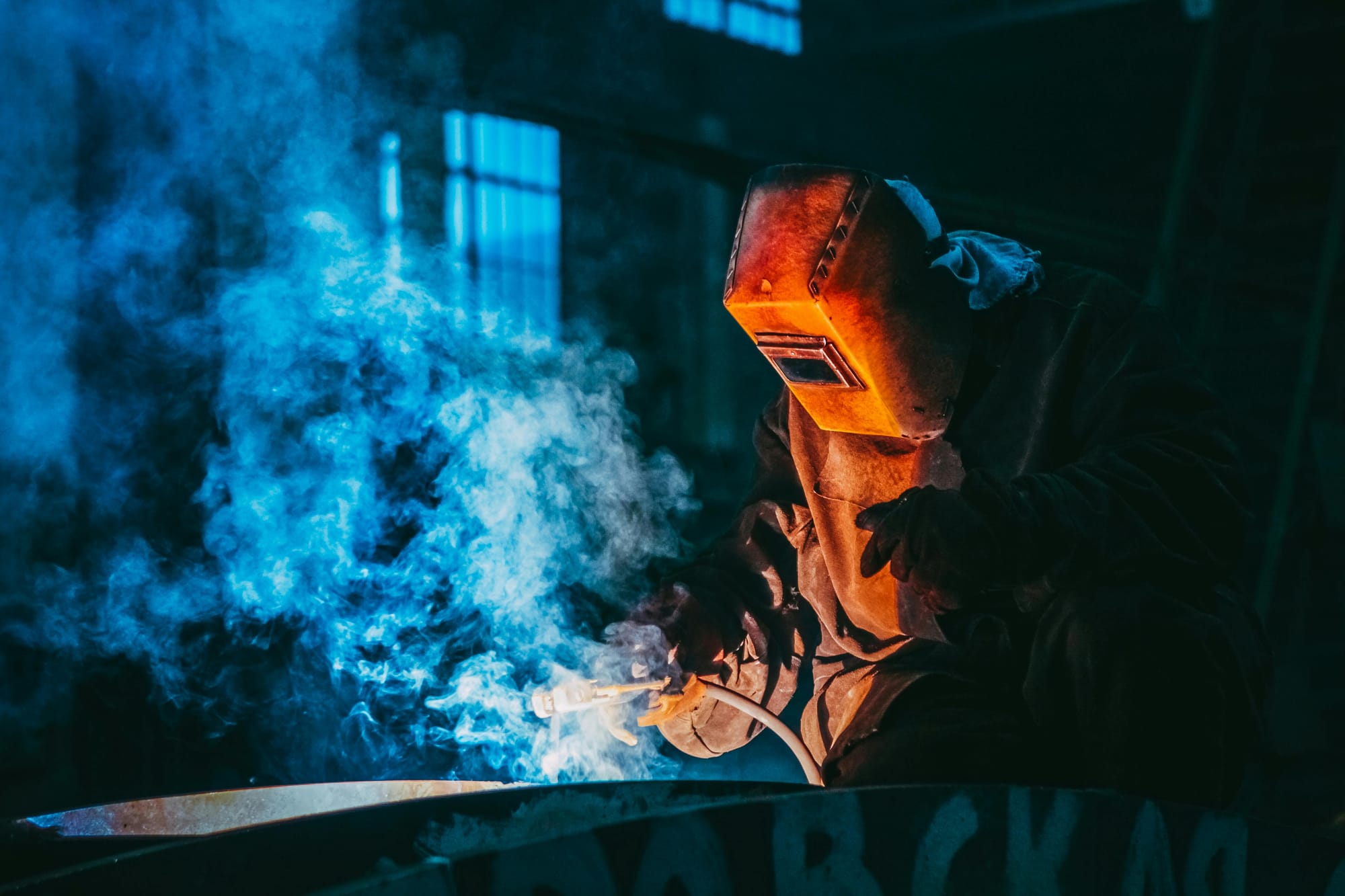
A helmet can reduce our ability to hear external sounds. The chances are that we won’t have too many hours in the right seat before this scenario plays out… We’re on the ramp, rotors running and someone on the ground indicates they want to talk to us. We gesture that it’s safe for them to approach, slide the headset cup off our right ear and hold our door open. They shout, we shout back. Message received and understood.
But what if we’re wearing a helmet? Not so easy. We’d have to remove the helmet to hear the person talking to us (19). With rotors running we don’t have enough hands to do this safely. If we do it anyway we are then left with a cumbersome object in the cockpit. Read this to see the mess that can get us in:
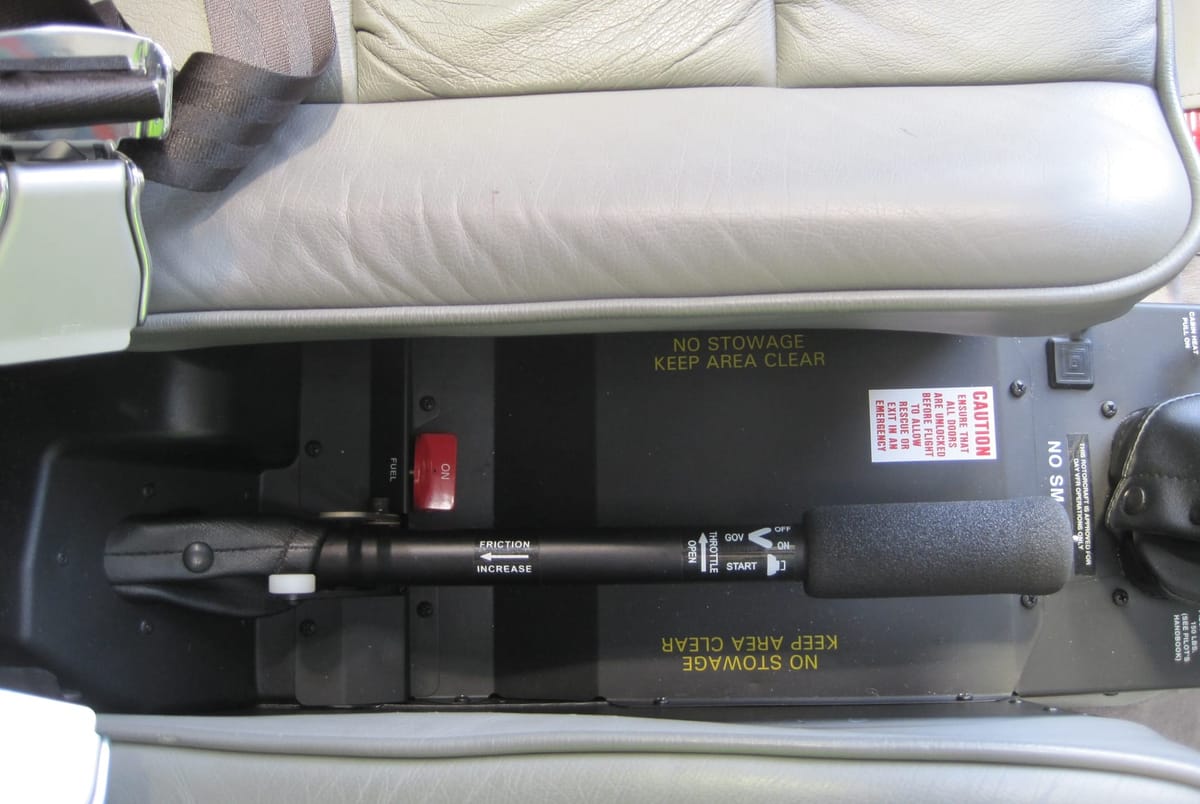
And, unfortunately, if we're wearing a helmet and follow the advice of the POH a similar scenario will occur after every flight. As part of the shutdown procedure, during engine idle (R22, R44) and after engine shutdown (R22, R44, R66) we should uncover one ear and listen for unusual noises. The idea is that we might be able to hear the 'impending failure of a bearing or other component'. Again, to do this effectively we are going to need to remove our helmet.
Another safety issue around removing our helmet whilst still in the helicopter is that we’ve removed our ability to hear and respond to communications from ATC and via the intercom. And, as important, we can’t initiate communication. Although we’re on the ground and stationary a lack of communication can enable an accident scenario to run its course. This article describes situations in which this has occurred…
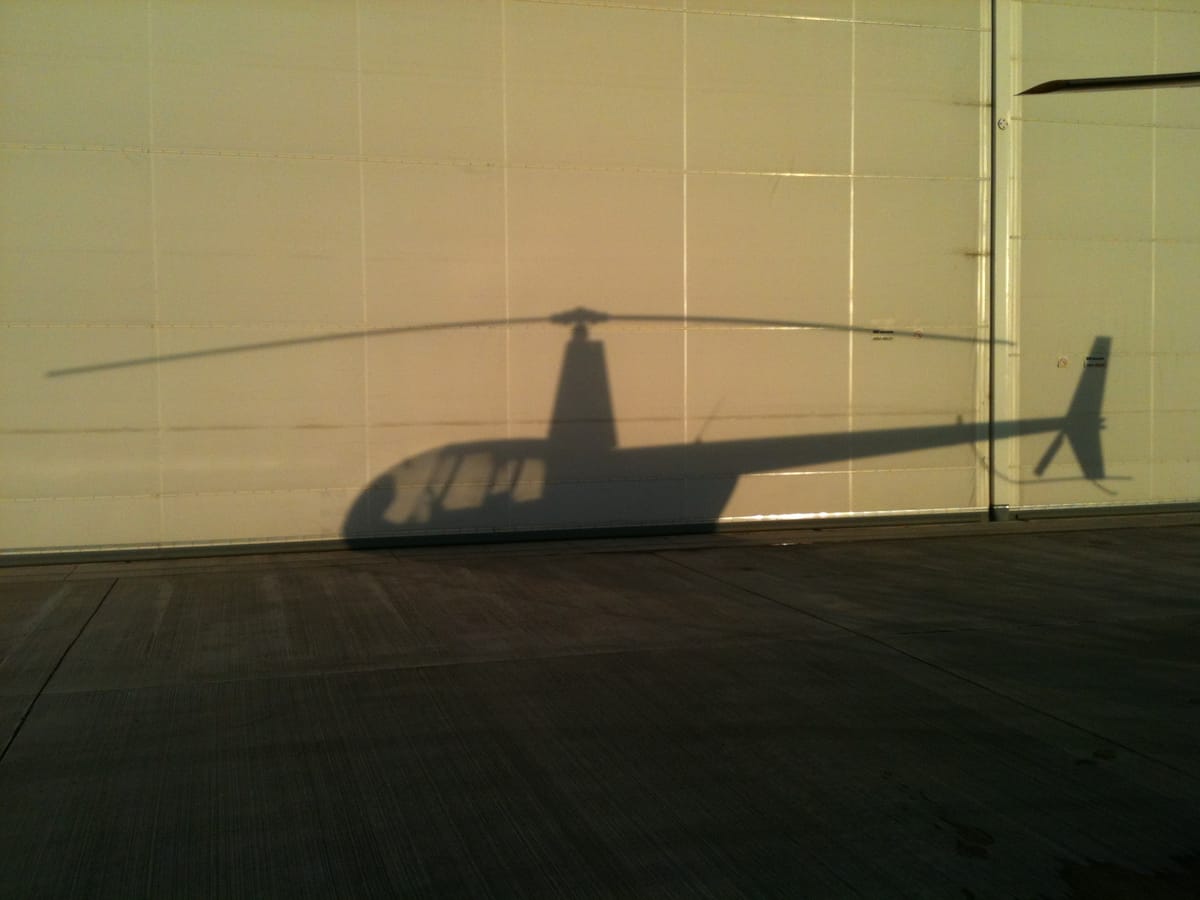
Occasionally wearing a helmet might cause us to take more risks in flight. An argument against wearing a helmet/visor in flight is that we might take more risks because of it (21). This idea of ‘risk compensation’ makes sense: we feel less vulnerable wearing a helmet so fly with a little less regard for the threats we face. The theoretical result is that any improvement in safety resulting from wearing a helmet is cancelled out, or worse. Whether risk compensation actually happens for individuals who always wear a helmet compared with those never wearing a helmet is a topic of long standing and heated debate (for example, 22). Motorcycling, snow sports and bicycling dominate the research field. Typically, there are no studies – conclusive or not – from the world of light helicopter flight to guide us.
None of which gets us very far.
But, we can glean something from the research. One of the more robust findings comes from two studies from the skiing/snowboarding world. These find a strong relationship between helmet use and risk-taking behaviour in individuals who only sometimes wear a helmet (23,24). To me this makes a lot of sense. If I’ve not worn a helmet for some time and I put one on and go flying I can imagine feeling re-emboldened, a touch “Top-Gun”. Yet if I always wear one flying, it's normal. I’ve gotten used to it and I’m not going to take more risks than I normally do as I don’t feel any safer than I normally do.
So, if we take the leap and accept that these findings translate from the snow slope to the cockpit – one risky domain to another – then we need to be careful after donning a flight helmet for the first time in a while. A clear-eyed check of our attitude is, as always, a good idea. Be self-aware... Are we now feeling indestructible and up for a few thrills or calmly confident yet aware of our own limitations and the risks of the flight ahead of us? If nearer the former then we need to fix it. How each of us does this is beyond the scope of this article.
Lastly, I’m going to guess that a first time helmet/visor wearer is not especially vulnerable to risk compensation as their cockpit experience has radically changed and this is enough to make most pilots a little more cautious, at least for a few flights.
So, should helicopter pilots and passengers wear a flight helmet?
Beyond the easily remedied problem of potentially restricting departure from the helicopter I haven’t found any reports attributing flight helmet use as a contributory risk in accidents involving light helicopters.
And we know that helmets have almost certainly prevented serious injury. And, in other cases, probably would have prevented injury, or even saved a life, had they been worn. So, on the face of it it’s a no-brainer, any occupant of a helicopter should wear a flight helmet.
Yet wearing a helmet is clearly not all upside for a pilot and we’d be naïve to dismiss a potential safety impact of the reported discomforts and definite drawbacks. Whether these stack up enough for each of us to tip the safety argument against wearing a helmet has to be down to our individual assessment. And this has to be based on experience and a knowledge of the information presented in this Article.
A possible future...?
Of course experience means wearing a flight helmet in a range of conditions. But for so many of us that is never going to happen given the present culture of not wearing a helmet in many types of operations.
Why is this the culture?
For me, and I’d suggest for many, it boils down to the perceived likelihood of sustaining a head injury on any particular flight being too low: I don’t think I’m going to crash or suffer a bird strike and get a head injury. Until it happens.
For helmets to save more lives and to prevent more injuries we need a change in the culture surrounding their use. The default should be to wear one when flying in a helicopter - whatever the industry sector - whilst understanding the downsides of doing so. The decision around wearing one should be one of opting out – carefully reasoned and perhaps just for specific flights – not of opting in.
If this was the culture and each new pilot saw others wearing flight helmets then they would too. And that’s without any change in the actual risk of sustaining a head injury. Then, on the extraordinary day when it saved their life they’d hear with incredulity about the past culture of not wearing a helmet and they'd be oh so thankful that they weren’t flying back then.
And finally...
If you already use a helmet or decide to buy one then make sure it’s fit for purpose. Most importantly, ensure that it meets a helicopter standard and not a fixed-wing standard. Helicopter helmets are designed to give a much higher level of protection than fixed-wing helmets. This is because once on the ground the helicopter blades may continue to rotate. This can cause significant movement in the aircraft resulting in multiple strikes to the head (25). Reference 25 provides essential information on helmet selection, standards, fitting and use.
A Safety Advisory Notice issued by the Australian Transport Safety Bureau summarises an R44 accident – prompting the Notice – and the key points of helmet use: “To work as designed, a helmet must be adjusted to fit the head and the chin strap must be fastened securely. The helmet must be serviced regularly, routinely inspected for damage, and replaced immediately if it has sustained a major impact” (26).
Sources of information
The Helicopter Safety Project Articles are built with gratitude on the work of others: The air accident investigators and the many pilots who, in the best spirit of promoting aviation safety, spoke candidly about the errors they had made in the accident chain of events. The main source material is air accident investigation reports published on Government aviation accident investigation sites. For accuracy in summarising each report I’ve stuck closely to the wording used within. At times I’ve presented short pieces of text verbatim and in these cases I’ve put the text in quotation marks. Each investigation report is referenced below and can be viewed by searching the accident number and the aircraft registration via an internet search engine or through the relevant government organisation. As well as the documented reports, in some Articles I’ve thrown in a lesson learnt from my own experiences of flying and of teaching flying. Where primary research papers and reviews are referenced they can be accessed through PubMed – the search engine on life sciences and biomedical topics maintained by the United States National Library of Medicine.
Air accident Cases:
Case 1: Australian Transport Safety Bureau. Aviation Occurrence Investigation AO-2014-058. Robinson R22 Beta II, VH-HRX.
Case 2: Australian Transport Safety Bureau. Aviation Occurrence Investigation AO-2009-010. Robinson R22 Beta, VH-YDA.
Case 3: UK Air Accidents Investigation Branch. Bulletin 5/2020. Investigation report EW/G2019/10/03. Robinson R44 Raven II, G-LLIZ.
Case 4: Australian Transport Safety Bureau. Aviation Safety Investigation report 199003049. Robinson R22 Beta, VH-HLB.
Case 5: Australian Transport Safety Bureau. Aviation Occurrence Investigation AO-2016-047. Robinson R22 Beta II, VH-WGB.
Case 6: Australian Transport Safety Bureau. Aviation Occurrence Investigation AO-2017-054. Robinson R44 Raven II, VH-MNU.
Case 7. Australian Transport Safety Bureau. Aviation Occurrence Investigation AO-2014-055. Robinson R22, VH-YPS.
Case 8. Australian Transport Safety Bureau. Aviation Occurrence Investigation AO-2015-134. Robinson R22, VH-HWJ.
Other references:
1. Robinson Helicopter Company Safety Notice SN-30.
2. Crowley John S. Flight Helmets: How they work and why you should wear one. The Journal of Air Medical Transport. August 1992 p19-26.
3. Reynolds BS, Rash CE, Colthirst PM, Ledford MH, Mora JC, Ivey RH. The Role of Protective Visors in Injury Prevention During U.S. Army Rotary-Wing Aviation Accidents. U.S. Army Aeromedical Research Laboratory. Fort Rucker, Alabama. USAARL Report No. 98-18. Jan 1998.
4. Taneja N and Wiegmann DA. Analysis of injuries among pilots killed in fatal helicopter accidents. Aviat Space Environ Med. 74: 337-341. 2003.
5. Bird strike mitigation in rotorcraft operations. EASA Safety Information Bulletin no. 2021-07. April 19. 2021. (https://ad.easa.europa.eu/ad/2021-07 Accessed 18 Jun 2025).
6. Robinson’s impact-resistant windshields improve bird strike protection. Robinsonheli.com May 13 2020. (https://www.robinsonheli.com/press/robinson-impact-resistant-windshields Accessed 18 June 2025).
7. UK Air Accidents Investigation Branch. Bulletin 6/2014. Investigation report EW/G2014/03/23. Robinson R44 Raven II, G-ODAZ.
8. UK Air Accidents Investigation Branch. Bulletin 11/2016. Investigation report EW/G2016/06/07. Robinson R44 Astro, G-BZGO.
9. Swiss Transportation Safety Investigation Board. Summary report. Guimbal Cabri G2, HB-ZDQ. Linked within: https://asn.flightsafety.org/wikibase/263541 (accessed 19th June 2025).
10. Airbus Helicopters Safety Promotion Notice No. 3587-P-00. December 7, 2020. (https://www.airbus.com/sites/g/files/jlcbta136/files/2025-01/3587-p-00-rev-0-en.pdf Accessed 20 June 2025)
11. Flight Helmet Cords can Impede Egress. USA National Transportation Safety Board Safety (NTSB) Alert 068. September 2017. (Accessed through: https://www.aasfonline.org/wp-content/uploads/SA-068.pdf on 25 June 2025)
12. Le P, Weisenbach CA, Mills EHL, Monforton L and Kinney M. Exploring the interaction between Head-supported mass, posture and visual stress on neck muscle activation. Human Factors 65: 365-381, 2021. doi: 10.1177/00187208211019154.
13. Gaydos SJ. Low Back Pain: Considerations for Rotary-Wing Aircrew. Aviat. Space Environ. Med. 83:879–89. 2012. doi: 10.3357/asem.3274.2012
14. Schmit C, Hausswirth C, Le Meur Y and Duffield R. Cognitive functioning and heat strain: Performance responses and protective strategies. Sports Med. 47:1289-1302. 2017. doi: 10.1007/s40279-016-0657-z
15. Martin K, McLeod E, Periard J, Rattray B, Keegan R and Pyne DB. The impact of environmental stress on cognitive performance: A systematic review. Human factors 61: 1205-1246. 2019. doi: 10.1177/0018720819839817
16. Froom P, Caine Y, Shochat I, Ribak J. Heat stress and helicopter pilot errors. Journal of Occupational Medicine 35(7): 720-724. 1993. doi: 10.1097/00043764-199307000-00016.
17. Bogerd CP, Aerts J-M, Annaheim S, Brode P, de Bruyne G, Flouris AD, Kuklane K, Mayor TS and Rossi RM. A review on ergonomics of headgear: Thermal effects. International Journal of Industrial Ergonomics 45: 1-12. 2015. doi: 10.1016/j.ergon.2014.10.004
18. Bogerd CP, Walker I, Bruhwiler PA and Rossi RM. The effect of a helmet on cognitive performance is, at worst, marginal: a controlled laboratory study. Appl. Ergon. 45(3): 671-676. 2014. doi: 10.1016/j.apergo.2013.09.009
19. The Hazard Assessment Team of The C-NLOPB Offshore Helicopter Safety Inquiry Implementation Team. Assessment of Hazards Associated With Pilots Wearing Helmets While Flying in the C-NL Offshore Area. 2011. (https://www.cnlopb.ca/wp-content/uploads/ohsi/hatsubgroup.pdf Accessed on 13th August 2025).
20. Vater C, Wolfe B, Rosenholtz R. Peripheral vision in real-world tasks: A systematic review. Psychonomic Bulletin & Review 29: 1531-1557. 2022. doi: 10.3758/s13423-022-02117-w
21. Push to Talk with Bruce Webb: A Helicopter Podcast. Episode 48: Changing The Safety Paradigm (w/ Dr. Ivan Pupulidy). (https://www.webbsightaviation.com/main Accessed 30 July 2025)
22. Pless B. Risk Compensation: Revisited and Rebutted. Safety 2016, 2(3), 16; doi: 10.3390/safety2030016
23. Ruzic L and Tudor A. Risk-taking behavior in skiing among helmet wearers and nonwearers. Wilderness Environ Med. 4:291-6. 2011. doi: 10.1016/j.wem.2011.09.001
24. Willick SE, Wagner G, Ericson D, Josten G, Teramoto M, Davis J. Helmet Use and Risk-Taking Behavior Among Skiers and Snowboarders. Clin J Sport Med. 29(4): 329-335. 2019. doi: 10.1097/JSM.0000000000000527
25. Crosson D. Considerations for Selecting and Using Helmets. Association of Air Medical Services. (https://vast.aero/archives/Technology/Helmets.pdf Accessed 15th August 2025)
26. Australian Transport Safety Bureau. Safety Advisory Notice AO-2020-040-SAN-01. Correctly fitted, secured and maintained flight helmets can save lives. March 2022.
Aviation Disclaimer
This ‘Article’ is produced by The Helicopter Safety Project (‘we’, ‘us’) on thehelicoptersafetyproject.co.uk. The Article cannot and does not contain aviation advice. The aviation information within the Article is provided in good faith for general informational and educational purposes only and is solely aimed at improving safety during the operation of helicopters. It is not a substitute for professional advice.
The aviation information does not in any way replace or override the instruction you may receive from a flying instructor at a flying training organisation or from a maintenance technician/engineer at an aircraft maintenance organisation or at an aircraft manufacturer. No information in the Article overrides or supersedes the Pilot’s Operating Handbook and the Flight Manual or other authoritative information published by the manufacturer of the aircraft being flown. Official documentation changes, so the information in the Article might contain technical inaccuracies as a result.
The information, analysis and safety lessons in the Article under no circumstances should be considered to take precedence over the official air accident investigation reports and aviation safety advisory documents published by government organisations. The adoption of the safety lessons is not mandatory, it is subject to voluntary commitment and engages only the responsibility of those who endorse these actions.
The information sources listed within the Article are not investigated, monitored, or checked for accuracy, adequacy, validity, reliability, availability, or completeness by us. We do not warrant, endorse, guarantee, or assume responsibility for the accuracy or reliability of any information within these sources.
Before taking any actions based upon the information in the Article, we encourage you to consult with the appropriate professionals. Under no circumstance shall we have any liability to you for any loss or damage of any kind incurred as a result of any information provided in the Article.

